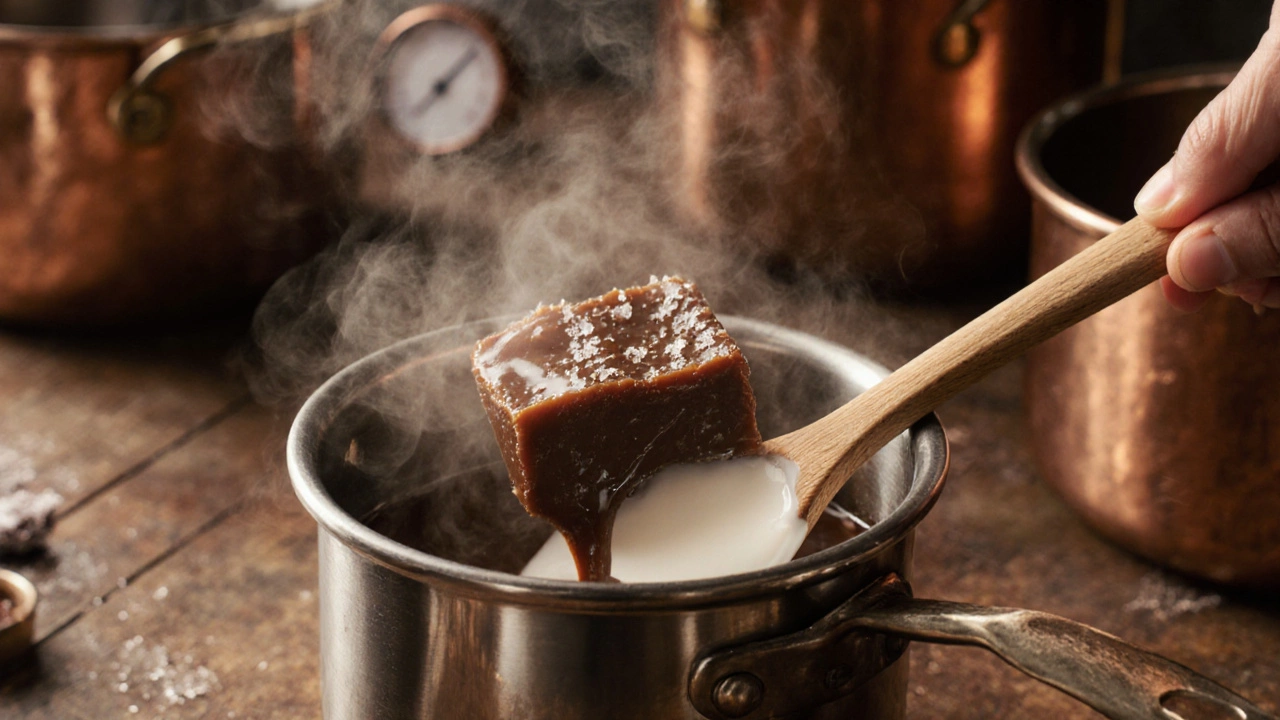Failed Fudge: Why It Goes Wrong and How to Fix It
When your fudge, a dense, smooth confection made from sugar, butter, and milk or cream. Also known as chocolate fudge, it should melt softly on the tongue—not crumble like dry sand or turn grainy like wet sugar. But too many home bakers end up with a batch that just won’t cooperate. The problem isn’t your recipe. It’s usually timing, temperature, or stirring. Fudge fails because it’s a delicate balance of sugar crystals forming just right. Too much heat? Too little stirring? Wrong cooling? One small mistake turns a rich, glossy treat into a disappointment.
What you’re dealing with is fudge crystallization, the uncontrolled formation of sugar crystals that make fudge gritty instead of smooth. It happens when sugar doesn’t dissolve fully before boiling, or when you stir too early after removing it from heat. The fudge texture, the smooth, creamy mouthfeel that defines perfect fudge depends on tiny, even crystals. Stirring too soon wakes up those crystals and makes them grow fast. Not stirring enough? Then the mixture heats unevenly, and sugar settles at the bottom, burning or clumping. And if you rush the cooling? The fudge hardens too quickly, locking in flaws before they can settle into that perfect consistency.
It’s not magic—it’s physics. Sugar syrup goes through stages: soft ball, firm ball, hard ball. Fudge needs to hit the soft ball stage (234–240°F), then cool undisturbed until it’s lukewarm. Only then do you start stirring. That’s when you coax the sugar into forming millions of micro-crystals instead of a few big ones. If you skip that waiting period, you’re fighting nature. And if you use a wooden spoon instead of a rubber spatula? You might scrape in stray crystals from the sides of the pan. Even the type of pan matters—thin metal heats too fast, causing hot spots. Cast iron? Too slow. Stainless steel with a thick base? That’s your best bet.
People think fudge is hard because it’s complicated. It’s not. It’s just precise. You don’t need fancy tools. You need patience. You need to trust the process. The same mistakes show up again and again: people stir while it’s still boiling. They test doneness by dropping a spoonful in cold water without a thermometer. They assume if it looks thick, it’s done. But texture isn’t visual—it’s tactile. And it’s not fixed once it’s poured. If your fudge already turned grainy, you can often rescue it. Reheat it gently, add a splash of cream, and let it cool again—this time, wait longer before stirring.
What you’ll find in this collection isn’t just a list of failed fudge stories. It’s a guide to the science behind why fudge breaks, how to spot the warning signs before it’s too late, and what real bakers do to fix it. You’ll see why skipping the stir step ruins texture, how humidity plays a role, and why some recipes call for corn syrup while others don’t. You’ll learn how to test your candy thermometer, what to do if your fudge won’t set, and how to turn a failed batch into chocolate sauce instead of throwing it out. No fluff. No guesswork. Just clear, practical fixes for the most common fudge disasters.

